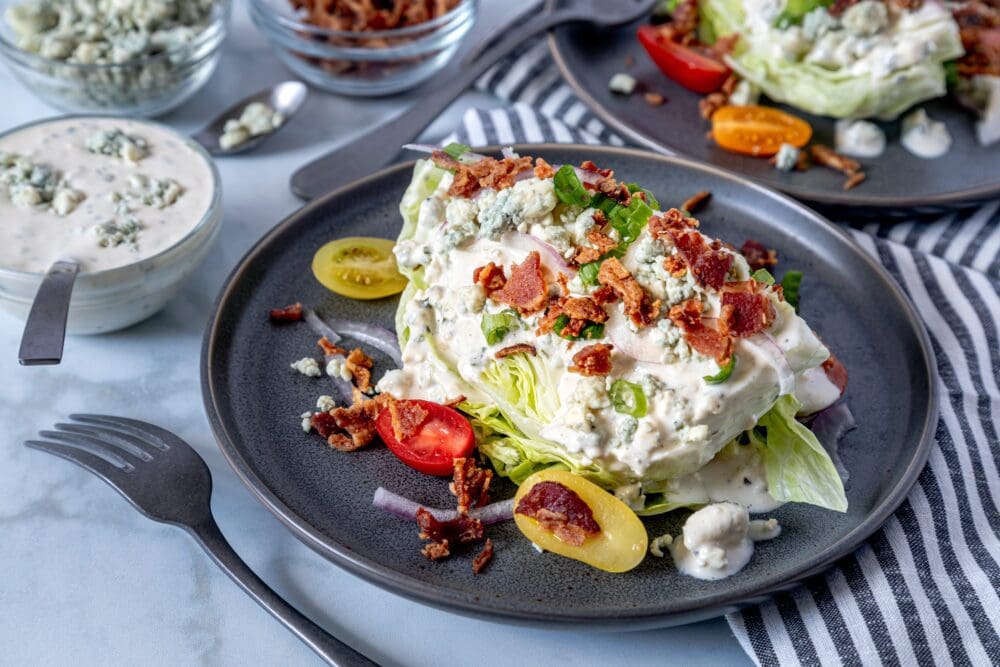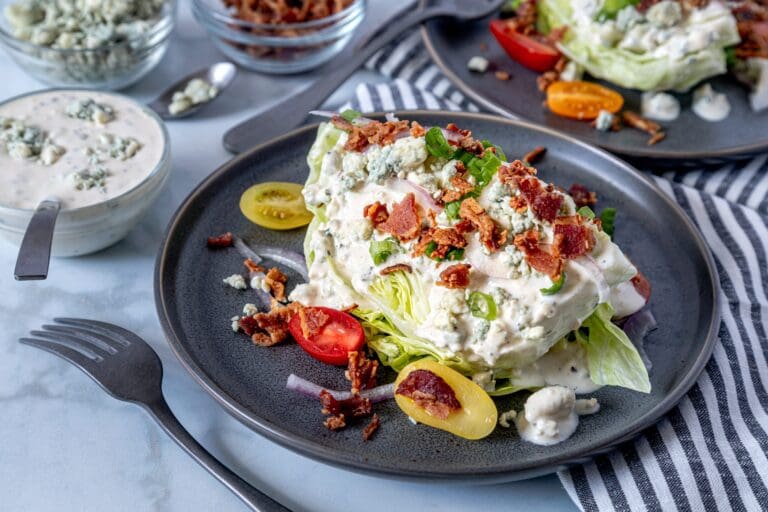Have you ever sat down to a restaurant meal and found a big piece of lettuce in front of you-one that looks like a quarter head? This is a wedge salad, and it is, indeed, an impressive size. The salad usually comes with a sprinkling of bacon bits, diced tomato, and chives on top, with a dressing on top, or on the side like a dipping sauce.
When you’re looking for a WOW factor in presentation, the Wedge Salad doesn’t disappoint. Whether it’s the traditional iceberg lettuce or a heart of romaine, the concept remains fairly consistent but for minor changes in the dressings, like using goat cheese instead of blue cheese crumbles or Italian dressing instead of blue cheese (Cesar and Ranch work, too). This recipe uses iceberg, but you don’t have to be married to that ingredient.
Chefs know they can keep a full head of lettuce crisp in the fridge better than loose pieces. So it’s economical. Nonetheless, there is a method to consume the salad successfully (and neatly). No simple fork will do for this treat. Use a knife and fork, using the fork to secure the lettuce and the knife to cut it.
When did the Wedge become a Wedge?
The history of lettuce stretches back to Rome, but the wedge appearing as an appetizer or side dish is a little more modern. The first printed recipe for Wedge Salad came out in 1916 in a cookbook by Marion Harris Neil. By the 1920s, the Wedge’s popularity grew in restaurant venues. The blue cheese crumbles on top came later in the 1950s. While they are not as popular as they once were, the Wedge Salad isn’t going away any time soon.
Some people find this is a meal to itself, but the Wedge salad pairs nicely with steak, pulled pork sandwiches, and many barbecue items.

Wonderful Wedge Salad
Ingredients
- 1 head iceberg lettuce
- 1 cup blue cheese crumbles
- 1 cup bacon crumbles
- 1 cup chunky blue cheese dressing
- ¼ cup diced onion
- 1 cup grape tomatoes, (halved)
- 1 tbsp minced garlic
- Optional toppings: Cucumber slices, olives, green onion, and croutons
Instructions
- Remove the outside leaves of the lettuce (anything that looks brown or wilted).
- Rinse the lettuce head.
- This recipe serves 4, however, if you’re cooking for fewer people, cut only ¼ of the head per person as needed (wrap the rest up and store it in the refrigerator).
- Remove the bottom of the stem from each quarter.
- Assemble however you wish. Salad dressing often goes right on top so it showcases all the toppings.


